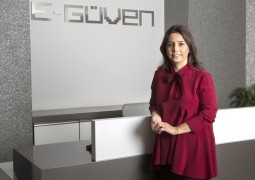Innovation is Inevitable! – Emre Özbek
by 0

“For successful innovation, using the “need” rather than the “idea” as the starting point brings more concrete results.”
I had a nice interview with the Founder of Kovvan – Ortak Innovation Agency Emre Özbek. We talked about innovation.
Shall we start with the description of “Innovation”?
Innovation means “newness that has been commercially successful.” In it, there is newness, economic performance, and success expectation at the end.
We can divide the methods into three;
- A new product, new version of a current product or to launch the current product in a new market,
- Developing a new business model,
- Using a new innovation process.
Would you please give examples for each of them?
 For example, Coca-Cola Life is a new product. ( http://www.coca-colacompany.com/coca-cola-unbottled/coca-cola-life-to-make-us-debut). If the present product came to its limits in a market, re-launch the product with a small touch-up like using a new formula or adding new ingredients. And the touch-up material had never been used in Coca-Cola till that day.
For example, Coca-Cola Life is a new product. ( http://www.coca-colacompany.com/coca-cola-unbottled/coca-cola-life-to-make-us-debut). If the present product came to its limits in a market, re-launch the product with a small touch-up like using a new formula or adding new ingredients. And the touch-up material had never been used in Coca-Cola till that day.
The examples for the new business model can be Uber and Yemeksepeti.com.
For innovation in the process, the best example would be the Chinese ships. Typically, the end product is delivered from China to Europe. They made a change in the process by transforming the ship to make production during the trip to save time.
A baklava brand decided to open shops in Brazil, but baklava dry in 2 days on the road. They started working with a Professor to invent a new technical package that prevents drying.
In summary, Innovation is to search and get results of a newness for revenue-enhancing or cost-cutting.
How do the companies manage the Innovation process?
If they have resources, they do it inside the enterprise. Every business does not know how to administer the process. It requires a competence and a knowledge base. Therefore, if the company needs innovation and does not have the resources, time or skill set, they can use Open Innovation model. Businesses that produce similar products or be the part of a chain production can build a Research and Development Center together. Of course, the information sharing is critical here. For that kind of co-work the way of doing business change because improvement comes with sharing. Nevertheless, there is the law dimension like who will be the owner of intellectual property rights or the right to the patent. It is easier to manage it in holding companies. For ex: two of the biggest Holdings in Turkey established similar companies. They also have universities in the group companies. So, they created new products by using that theoretical knowledge base and intellectual property rights.
Are they called “Innovation Center”?
Yes. As a third party, we will see also “Innovation Agency.” Agency is an outsourced service provider that helps to meet the clients’ innovation needs. It works in 3 ways; for instance, you need a robot. The agency,
- Can introduce you to the company that produces that robot,
- If there is no current firm, they can introduce you to the innovator company or individual that has the intellectual property rights. Agency may also help to complete the semi-finished product,
- If any of them does not exist, they may collect the human resources needed. They first design and then make the product.
For successful innovation, using the “need” rather than the “idea” as the starting point brings more concrete results. The customer of that innovation is ready.
There is another player, the client. We shall ask them also the question “what do you want?” Getting the opinion of the people is another method of Open Innovation.
Would you explain the “Frugal Innovation”?
It is used to find solutions when the resources are limited, especially in undeveloped countries like energy, water, etc. One of my clients in agriculture sector is planting seeds in exterior building cladding materials. They are making vertical gardens on the outer side of the building. Besides it serves as coating material against heat, fire, and water. Innovation shall be constructed sustainable and fulfilling the needs.
How is the progress in Techno-Cities as one of the resources of Open Innovation?
 Techno-Cities are mostly built in universities to develop a technology. Here the R&D activities are supported by tax advantages. As they are settled in the schools, they become the partners of commercialization of the products that university students or professors invent. Lately, another concept came up “Private Techno-City.” The principle is the same, but it is not engaged with the university.
Techno-Cities are mostly built in universities to develop a technology. Here the R&D activities are supported by tax advantages. As they are settled in the schools, they become the partners of commercialization of the products that university students or professors invent. Lately, another concept came up “Private Techno-City.” The principle is the same, but it is not engaged with the university.
Istanbul Chamber of Industry started a commission work that aims to motivate industrialist, college and Techno-City to work together. The needs and limits of the parties are definite. The Techno-City plays an important role between the university and the industry. Because industry needs a practical solution that someone understands, analyses the needs with economic concerns and integrates with the theoretical knowledge of the school. It is important in that manner.
It generates opportunities for the university students,also.
Exactly, nearly every Techno-City has an incubation program. People that have ideas and want to transform them into products start there. In Techno-Cities the companies mostly are up and running, but in incubation program, they are not firms, yet. For instance, I work as a mentor at Istanbul Technical University Seed, which is a program that 300 projects are incubated. Students come from different universities and cities like Ankara, Bursa, and İzmir. There is a calling for applications. They present the idea of the project and pass an audition in front of a jury and are accepted in the program. One of the benefits of programs provided is the collaborated work environment. An office setting is provided for the project, not only a table, a chair, Internet access, food, cleaning service but also several pieces of trainings, seminars, and mentoring opportunities.
How do SMEs meet with incubating projects?
Unfortunately, SMEs are not aware. They criticize the lack of industry knowledge of students in projects. However, if SMEs get in touch with Techno-Cities and explain their needs better and stand close to the projects they support, the technology, money, and resources will serve to cover the needs better. They will not come and say “that is an interesting project, but it does not work for us”, after the projects are accepted to the incubation program. We try to create an atmosphere to increase the companies’ awareness.
We are talking about the College students, but today even elementary school students are affected. Let’s talk about the Maker Movement a little bit.
The essence of the Maker movement is to evolve from the consumer society to producer society. It means that the technological production techniques will be used, disseminated and accessed. The environment and mindset are given to the small children to produce their dream products. There are some workshops in schools. For ex. Sensors and 3D printers are used. They model a virtual idea with design software and print them with 3D printers. They also add sensors.
There are programs like AutoCAD, Tinkercad. What else are there? Can they be used at home?
Yes, they are used at home. There is Google SketchUp, also. For instance, Tinkercad is used online. There is no need to download any software. 3D design is made and with geocoding it is transformed into a language that 3D printer understands and then it is uploaded into the 3D printer with a file and the design is printed.
The material used in the 3D printer is another important parameter. Today plastic material is used, but this field also improves. For ex. if you add some wood material in the plastic, you get some products with the wood touch. For the printing techniques, it is possible to print the mold of jewelry. When the inside of the mold is filled with gold and the pattern is melted, the jewelry is ready. Printing techniques are getting flexible. When 3D printing is the norm, the design materials and the purpose of the products will be more relevant. They will become familiar at homes.
We are in a period where we see an ear is printed with a 3D printer. What is waiting for us in the future?
Firstly, production methods will change dramatically with 3D printer technology. An airplane company prints 2% of aircraft parts with 3D printers. Their target is 60%. In the future, you will be able to print a broken dish of your porcelain dining set at home. Brands will sell designs, not the products. The need for big factories will decrease, and ateliers will be used instead.
Today many people are trying to find an innovation idea. It’s nearly impossible not to get a result out of all that physical and moral attention and effort. The critical point is to have a proper base, management, experiencing that process efficiently and being accomplished by commercializing the ideas that came out.
Thank you very much.
My pleasure.





